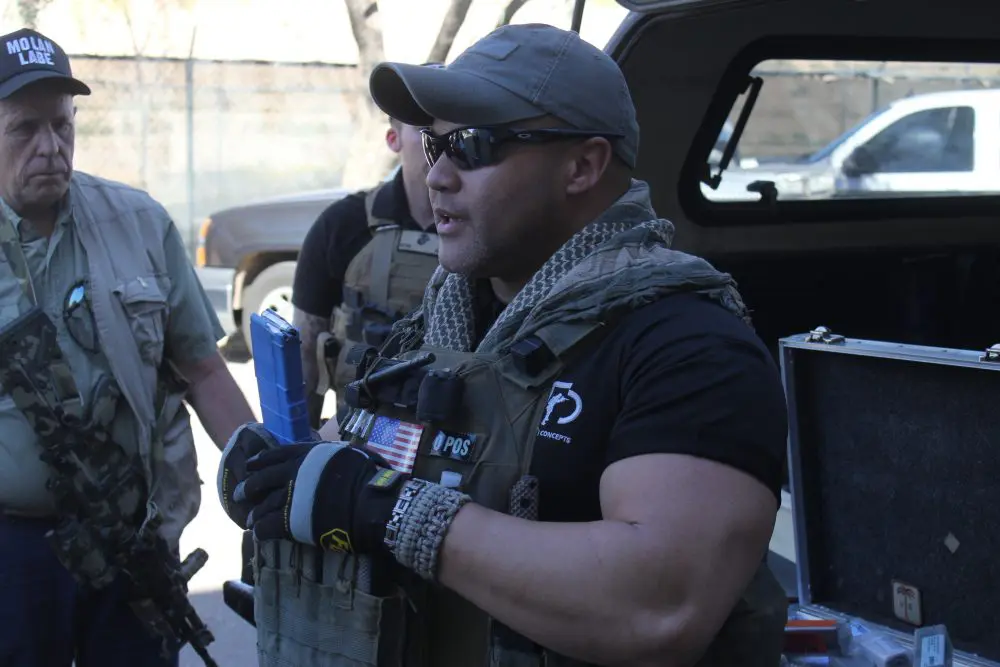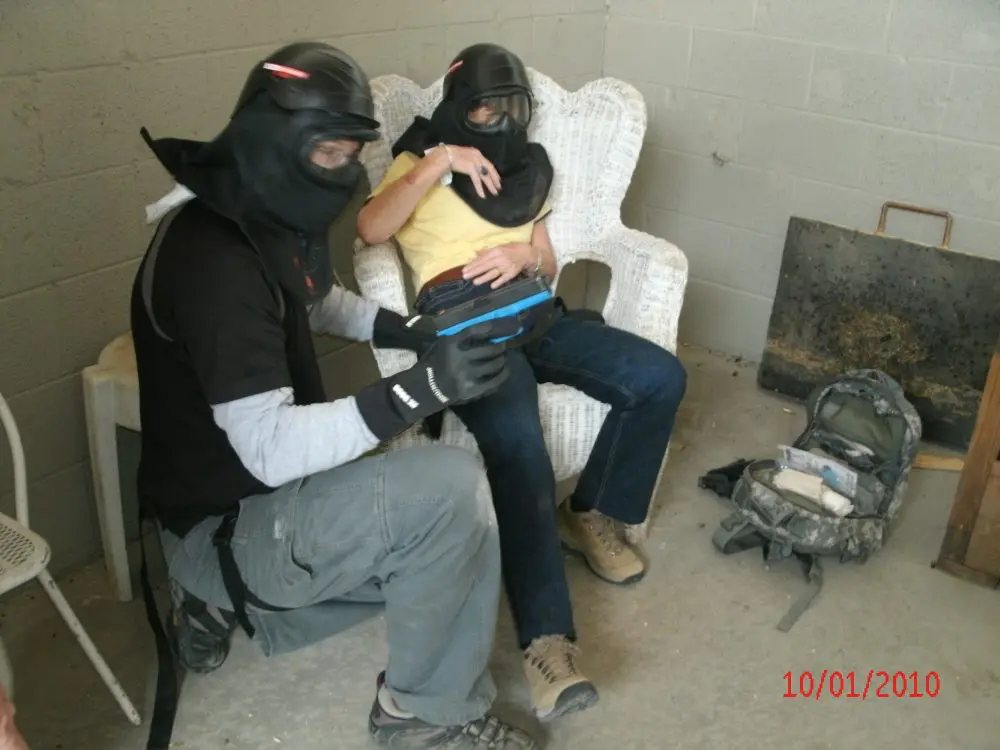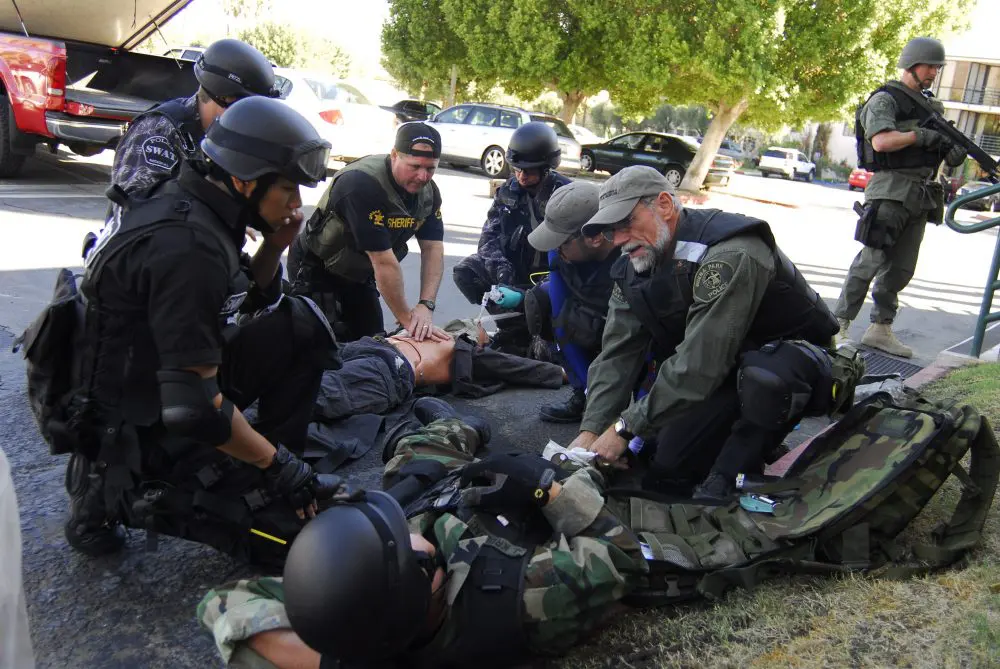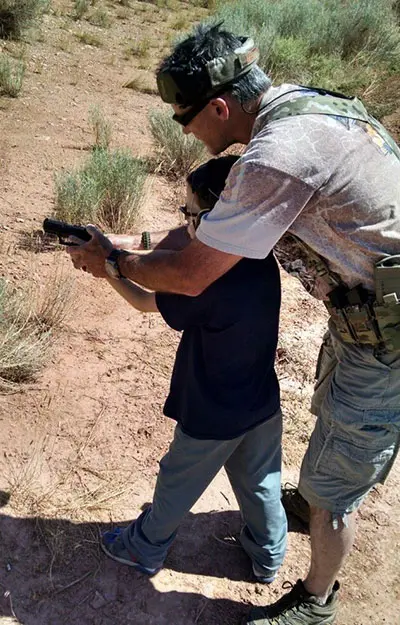Zero can mean nothing.
Or it can mean everything, relative to the point-of-impact precision desired by a shootist.
Obviously firearms with adjustable sighting systems—especially those with non-factory aftermarket additions like telescopic sights and red dot optics—have to be battle-zeroed before being used in any for-real confrontation. Otherwise the operator will have no concept of the external ballistic trajectory when firing the weapon.
Since most carbines and rifles are battle-zeroed point blank to a distance of approximately 250 meters, the shootist has to ensure that the bullet trajectory will indeed achieve this, excluding pilot error problems. Unlike the modern colloquial misuse of the term “point blank,” whereby the term is often used to denote a close distance where you insert a gun barrel up someone’s sinus cavity, the true and the original maritime military definition of the term indicates a target distance at which one holds the sighting system “dead on” the intended point of impact, not having to compensate for bullet trajectory out to that distance.
The point blank distance is thus directly relative to the distance at which the weapon is zeroed by a specific shootist, and not from a bench rest. (A firearm, especially a heavy-recoiling shoulder-fired weapon, will often print to a different point of impact when fired from a bench than when fired from offhand, kneeling, sitting, and/or prone. Not always, but often enough to cause misses when fired in the field.)
So herein follows some information on how to zero specifically a carbine, such as the ubiquitous M16/M4 family of weapons, which has a sighting system mounted high above the weapon’s barrel. This can, in turn, exacerbate the trajectory “loop,” dependant on point-blank zero setting.
Adhering to these principles can save the shootist time, money and excessive ammunition expenditure during the zeroing process.
First, use the time-saving technique Colonel Jeff Cooper devised. Place a square steel plate of approximately 20-inch cross-section about halfway up a high, safe backstop, distanced about 200 meters from the gun muzzle. Get a friend to operate as a spotter, and fire one careful, perfect round at the steel plate. If the bullet hits the plate, you’re ready to head for the 25-yard line to shoot your five-shot groups for finite zero. (And yes, that’s five-shot groups. If you blow one of a three-round group, you can’t guarantee that the remaining two rounds are actually where the main group supposedly is.)
If the initial round is not on the plate—and with new equipment it’s unlikely that it will be—make gross windage and elevation adjustments at the same time (normally a “no-no”), then fire another single round. One can strike the plate with very few rounds with initially non-zeroed equipment by utilizing this method of firing single rounds interspersed with major correctional mechanical adjustments.
Once bullet impact is on the 200-meter plate, you can then repair to a 25-yard paper target for five-shot finite zero changes. And this is when you have to establish at what distance you want your point-blank zero to be, and accordingly attain a relative point-of-aim, point-of-impact zero at 25. Once this has been achieved, recheck at 100, 200, 300 yards and so on, possibly making minor mechanical elevation changes at these distances.
Why not zero initially at 100, 200, or whatever distance? Because:
A) Most people can’t put them through the same hole at 25, let alone 100 or 200.
B) The manufacturers’ claims of X amount of clicks to obtain Y amount of corrective movement—elevation or windage—become a non sequitur, as they have no idea which weapon (or how high above the bore line, or weapon barrel length) you’re going to be bolting to that magic glass you bought from them.
C) Now you’re back to using Colonel Cooper’s technique, except that you’re using five times as many rounds and taking five times longer, even assuming that you’re one of the rare breed who can shoot MOA (Minute of Angle, or one-inch diameter groups per 100 yards).
And no, an 11-inch barreled M4 carbine will not shoot to the same point of impact at 300 yards as an M16 rifle if they’re both zeroed the same at 25 yards. The sight radius on the former is a lot shorter than the latter, and the bullet trajectory will as a result be different, irrespective of bullet velocity. Is the 11-incher potentially as accurate? Absolutely. It depends on your personal choice of point-blank zero relative to the weapon’s trajectory capability. Those who disagree are the same people who say a five-inch barreled revolver is “more accurate” than a three-inch model, because of the longer sight radius. No it isn’t, plain and simple.
Part of the self-caused zeroing problems are caused by old wives’ tales: lack of understanding of gravity pull on a bullet versus projectile “climb,” the latter caused by tilting the weapon to attain a mean distance where the bullet impact will meet the optical line of sight; putting blind faith in mass-produced weaponry and expecting every firearm to react the same to specific adjustments; and last but not least, most of us won’t admit that we can’t shoot worth a damn.
Stay away from so-called advanced techniques, stick with the basics, and read a geometry book sometime. And if you want to save yourself a bucket of perspiration, time, and ammunition, try the Cooper initial rough zero system.
Sometimes zero can be defined as nothing. Sometimes it can mean everything…
[Louis Awerbuck is Director of the internationally acclaimed Yavapai Firearms Academy. Course information and schedules are available at their website at www.yfainc.com.]





